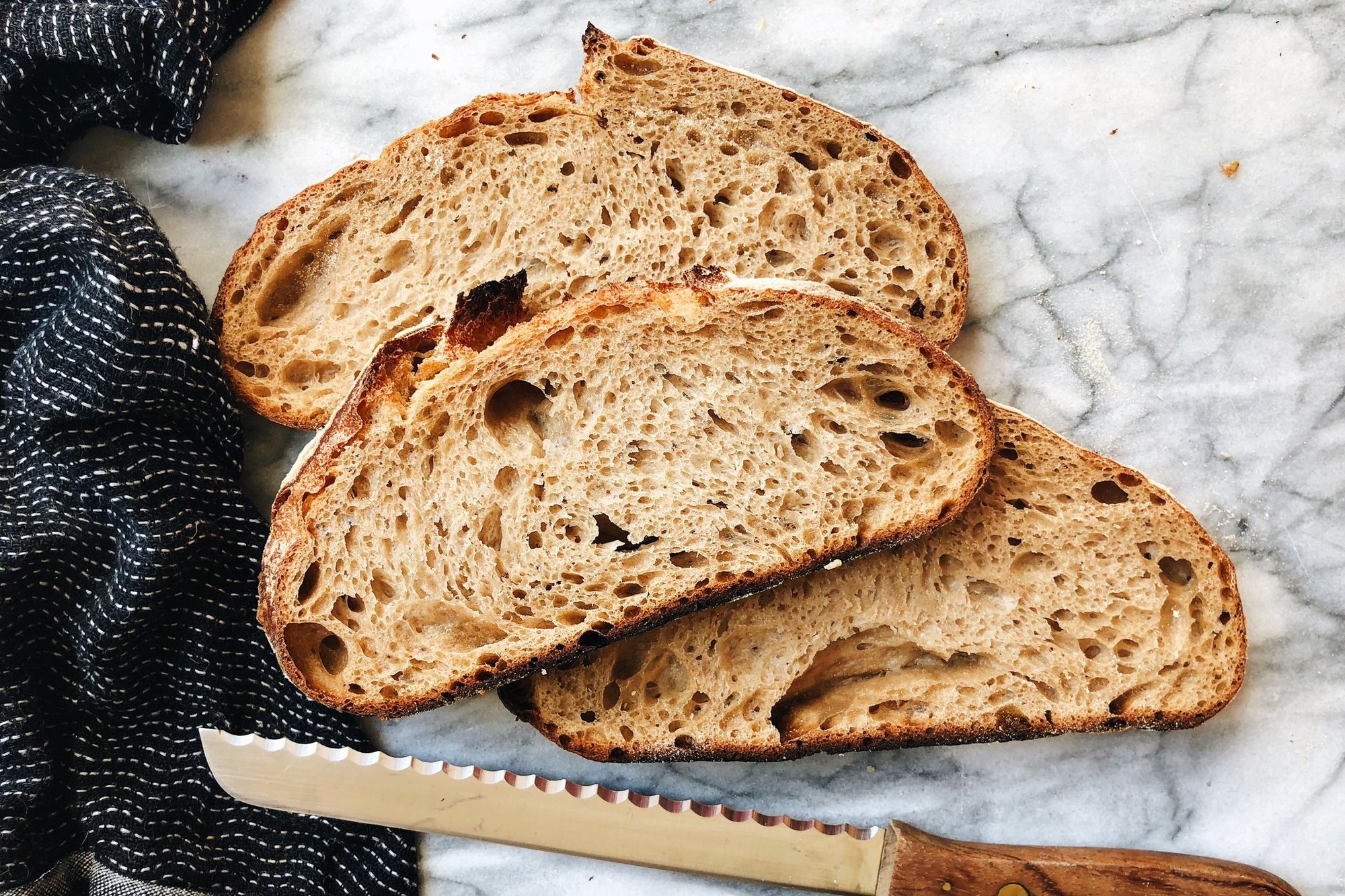Baking sourdough bread can be intimidating for many beginners, to say the least. We asked our baker Alessandra to break down the basics to the first step in succeeding at sourdough: maintaining a thriving sourdough starter.
If you've ever been the proud recipient of a sourdough starter sample at our pop-up shops, you'll know it isn't always the easiest thing to do (many of you write to us to tell us yours has not survived).
Here we illustrate two methods for starter maintenance, the Countertop Method and the Fridge Method.
Countertop Method
To maintain a thriving sourdough starter, it helps to create a routine. It is best to feed your starter daily, around the same time every day (ie. morning or night). For this method, keep your starter on the counter at room temperature.
Use a 1:1:1 ratio of flour to water to the starter. That is equal parts starter, water, and fresh flour.
We recommend these quantities
40 grams Flourist Sifted Red Spring Wheat Flour
40 grams 78-80 degree (Farenheit) water (body temperature if you do not have a thermometer)
40 grams starter (discard the rest, yes you read that right!)
It is super handy to have a kitchen scale for this, but if you don't, simply eyeball, and mix with a clean spoon until you have a very thick batter. Each new feeding requires that you discard the starter that is over your 40 grams needed to keep the feeding schedule on track. This can be the most difficult hurdle for many new bakers, and is also why a smaller amount of flour daily is best to use for maintenance!
Fridge Method
You can also keep your starter in the fridge if you cannot commit to feeding it once daily. This is a great way to participate in the sourdough baking process without the daily commitment! If you will be keeping in the fridge, we recommend to feed it once every week or so. Follow the instructions above for quantities, leaving it on the counter to allow it to rise and fall while it 'feeds', before returning it to the fridge. This makes it easier for the starter to bounce back once you take it out for a bake. Take it out two to three days before you plan to bake and feed it twice a day until you are ready to bake.
Baking Sourdough Bread
The night before you plan to bake, feed your sourdough starter twice: the night before and then the morning of your planned bake.
Since we recommend using a smaller amount for maintenance, the night and morning feeding that you plan to bake on, increase the amounts to 75 grams of each, so you have enough to bake with and have some leftovers.



Comments
Hi Isabelle! Yes, in a pinch you could use a whole grain flour, though we recommend to stay as consistent as possible with the flours you use to feed the starter with. I hope that helps!
If I am out of sifted red spring can I use whole grain red spring to maintain my starter?
Can you use your sourdough starter right away? Would you just measure equal parts starter, flour and water as directed and feed it the night before and then again in the morning? How long do you have to wait before it’s ready to go? Thank you!
I’m wondering if the amounts you use to feed the starter would also be the same amount used to create the beginnings of a starter? So happy I’ve found a Canadian source for Einkorn flour. Do you ship to Ontario?
Thank you
Hi Michael!
Your starter is ready to go after one feeding!
My daughter bought me a bread maker starter kit including a sourdough starter. How many days do I have to feed it before I can start using it to make bread?
Hi Kelly! The starter just needs to be loosely covered. We do not recommend using our Whole Grain Rye Flour for starter as it tends to make the starter much too active. If you have a sluggish starter that needs to be perked up adding some of our Rye Flour is a great way to get it going, but using it on a regular basis makes a sourdough starter that requires many more feedings and more monitoring. Hope that helps!
Does the sourdough starter need to be covered? If so tight lid or loose. We also see alot of bakers Recommending rye flour for starter but I don’t see you have.
Where can I get the sourdough starter or do you have a recipe that I can make at home too?
Hi Maxine! We have updated the temperature to indicate we are using Farenheit ~ thank you for clarifying! We hope that helps!